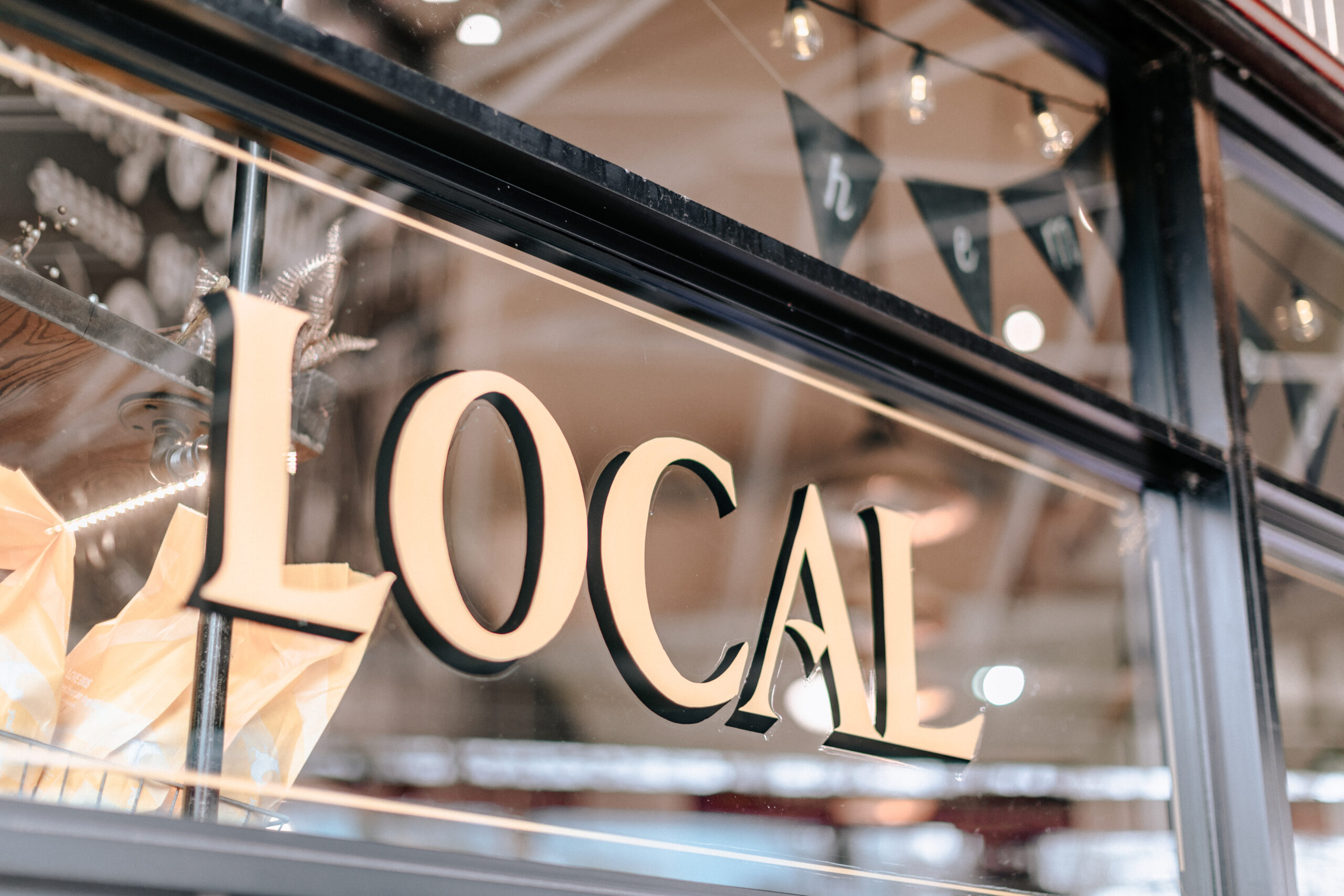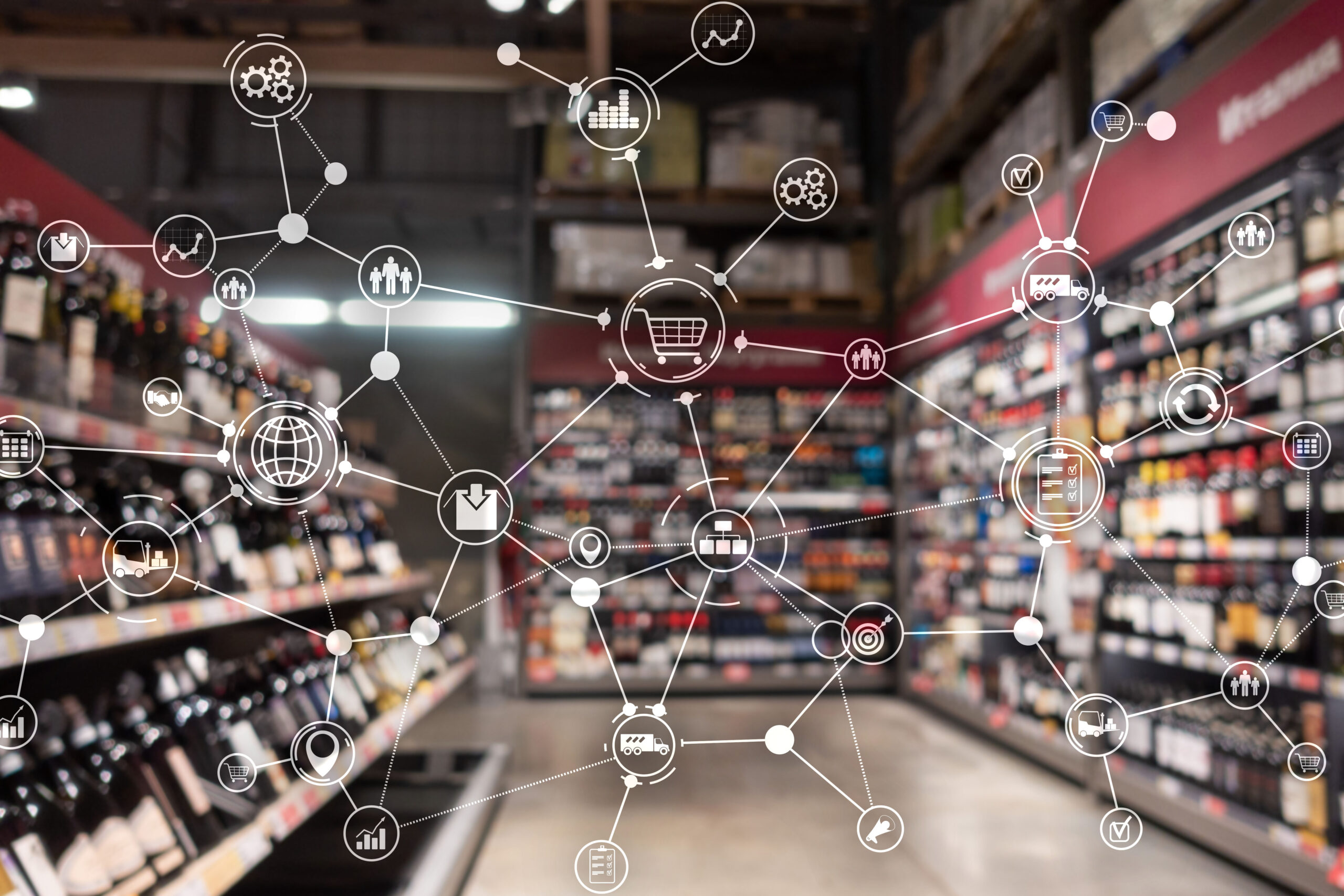Today’s consumers expect both variety and familiarity. They want access to specialty foods, international flavors, and sustainable products, yet they still expect their go-to essentials to be readily available. At the same time, shoppers are paying more attention than ever to where their food comes from, and they’re choosing stores that reflect their values. For grocery retailers, the message is clear: Stocking local isn’t just a trend; it’s a competitive advantage.
But what works in one neighborhood might not work in another. That’s why strategic stocking decisions—rooted in data, customer behavior, and thoughtful product placement—are essential to staying relevant. In this post, we’ll explore why stocking local matters, how product placement influences sales, and how grocery retailers can use data-driven insights to optimize their store layouts.
The Power of Localized Inventory
No two neighborhoods are exactly alike, especially in urban areas. Demographic shifts, immigration patterns, and cultural diversity mean that what sells in one store may be completely different from what flies off the shelves just a few blocks away. A city like Chicago—a patchwork of distinct neighborhoods with unique histories and populations—is a prime example of why hyperlocal inventory planning is essential for grocery retailers.
Hyperlocal Shopping Habits: Why One Zip Code Can’t Define an Entire Market
Over the decades, waves of immigration and shifting demographics have transformed Chicago’s neighborhoods, creating distinct micro-markets with unique consumer needs. In Pilsen, a neighborhood with deep Mexican-American roots, many local grocers offer a wide selection of Latin ingredients, from fresh tortillas to dried chilies. Just a few miles north, Albany Park—one of the most diverse neighborhoods in the U.S.—is home to a rich mix of Middle Eastern, Korean, and South Asian communities, reflected in the availability of spices, pantry staples, and produce from these regions.
These differences have a direct impact on sales. A one-size-fits-all inventory strategy risks alienating entire customer bases, while a hyperlocal approach allows grocery stores to serve as trusted hubs that reflect the unique preferences and needs of their surrounding communities.
Ethnic and Cultural Influences: More Than Just a Trend
While immigration patterns have long shaped local grocery markets, cultural exposure through travel, streaming platforms, and social media is accelerating consumer demand for global flavors and authentic, regionally inspired products.
Today’s shoppers aren’t just looking for specialty items in designated international aisles; they want authentic flavors integrated into their everyday shopping experience. This is even so for young people who haven’t stepped foot out of their hometowns. TikTok, Instagram, YouTube, and other social media platforms have propelled international foods into the mainstream faster than ever before.
With the rise of these additional influences, many products that were once considered global are now staples in many grocery stores across the U.S.:
- A single TikTok video featuring Trader Joe’s frozen kimbap sent sales skyrocketing, leading to weeks-long shortages and limited quantities upon its return.
- Over the past four years, birria taco options have grown on restaurant menus 412%.
- Once a niche item, kimchi has seen its sales in the U.S. nearly double since 2015.
The numbers make it clear that demand for international foods is a long-term shift in consumer behavior. The Hispanic food market in the U.S. is expected to grow by $104 billion between 2024 to 2028, and more mainstream retailers are expanding halal and kosher sections to meet the rising demand from Muslim and Jewish consumers. In the frozen-food aisle, brands are offering everything from soup dumplings to samosas to cater to shoppers looking for authentic yet convenient options.
Regional Sourcing: A Competitive Advantage
A PYMNTS Intelligence survey found that one in three consumers actively seeks out locally made or sourced options when choosing where to shop. Retailers that emphasize regional sourcing—whether it’s produce from nearby farms, dairy from local creameries, or baked goods from neighborhood bakeries—tap into the growing demand for freshness, sustainability, and community support.
National chains are taking notice. Whole Foods Market’s Local Forager program partners with small, independent farmers to bring hyperlocal products to stores; H-E-B in Texas features a “Made in Texas” section, highlighting everything from tortillas to craft beer; Midwest-based grocers such as Hy-Vee and Meijer prioritize partnerships with regional meat producers to ensure freshness and transparency.
Testing Product Placement: What Works Where?
While emerging trends can help retailers stay ahead in the short term, data-backed decision-making is key to ensuring lasting success. Without a clear merchandising strategy, even the most enticing inventory can go unnoticed and underperform. Especially given that today’s grocery shelves are more crowded than ever, simply guessing what will work isn’t enough.
Shoppers Don’t Always Know What They Want—Until They See It
While many shoppers enter a store with a grocery list, countless purchases happen on impulse. In fact, impulse buying accounts for up to 62% of grocery store purchases, and even up to 80% in certain product categories. Strategic shelving plays a huge role in product discovery, influencing what customers grab as they browse.
We know the traditional categories, such as:
- Eye Level = Buy Level. Products placed at eye level sell up to 80% more than those on lower shelves.
- Cross-Merchandising Works. For instance, placing pasta sauces near fresh pasta or salsa near tortilla chips encourages bundled purchases.
- Endcap Displays Drive Sales. Well-placed promotional displays can boost sales by 540%, according to research from Merit.
The takeaway? Placement matters just as much as selection. But what is the right placement, and how do you decide? Introducing new products comes with risk; misplaced items can lead to slow sales, excess inventory, and missed opportunities. The most effective way to determine optimal placement is through advanced testing methods that analyze real shopper behavior, helping stores make data-backed decisions that drive sales and maximize shelf space.
Leveraging Consumer Behavior Data to Make Smart Decisions
With eCommerce competition growing and shoppers overwhelmed by options, the in-store experience has to get it right the first time. The right data can unlock sales potential, optimize store layouts, and give customers what they actually want. But not all data is created equal. That’s where cutting-edge technology comes in.
From Guesswork to Precision: Why Better Data Wins
Traditional retail relied on past sales reports, gut instinct, and broad shopper trends to decide what should go where. But in an age where online retailers are leveraging AI-driven algorithms to personalize every experience, brick-and-mortar stores can’t afford to be reactive; they must be predictive. Are shoppers more likely to buy oat milk when it’s placed in the dairy aisle or the health food section? Would sales of an emerging global brand increase if its products were integrated throughout the store instead of in an “international” aisle? Which aisle placement will maximize impulse buys for high-margin products?
Questions like these don’t have to be answered through costly in-store experiments anymore. Thanks to advancements in virtual reality (VR), augmented reality (AR), and artificial intelligence (AI), grocery retailers can now predict consumer behavior with greater accuracy than ever before—without having to overhaul store layouts blindly.
Digital twins—virtual replicas of stores and shelves—allow retailers to test changes in a risk-free environment before rolling them out in the real world.
Imagine being able to:
- A/B test product placements virtually and see how different layouts affect sales before making any physical changes.
- Optimize shelf layouts for different locations based on hyperlocal shopping habits.
- Use augmented reality to visualize displays and signage in-store, allowing for real-time validation and adjustments to planograms.
Retailers leveraging data-powered simulations can make smarter decisions, faster, and stay ahead of shopper expectations. At the end of the day, it’s not about collecting more data; it’s about collecting the right data. Every grocery store has sales numbers, foot-traffic reports, and past performance insights. But without the ability to analyze and apply the pertinent data points in real time, it’s just noise.
That’s why the most successful retailers are investing in:
- AI-driven analytics to uncover hidden shopper behaviors.
- AR and VR simulations to test product placements before committing to physical changes.
- Real-time shelf optimization tools that help adjust inventory based on demand before customers even notice a product is missing.
At InContext, we do more than collect data. We turn it into actionable insights. With more than 2 million recorded shopper experiences, our AI-driven simulations and virtual merchandising solutions provide unparalleled speed, accuracy, and predictability in understanding consumer behavior.
We help grocery retailers move beyond guesswork so that every in-store decision is based on a clear, data-backed path to success.
The Future of Retail Is Smarter, Not Harder
The modern grocery landscape is no longer about stocking shelves and hoping for the best. It’s about understanding what shoppers truly want before they even step through the door. The stores that thrive will be those that see past broad national trends and instead master the nuances of their local markets.
Today success in grocery retail is less about offering more choices than it is about offering the right choices, in the right places, at the right time. And to achieve that, grocery stores need relevant data to enable precision testing.
The best decisions are informed by real shopper behavior and validated through testing. If you’re ready to move beyond guesswork and make smarter, data-driven in-store decisions, reach out to InContext today.





